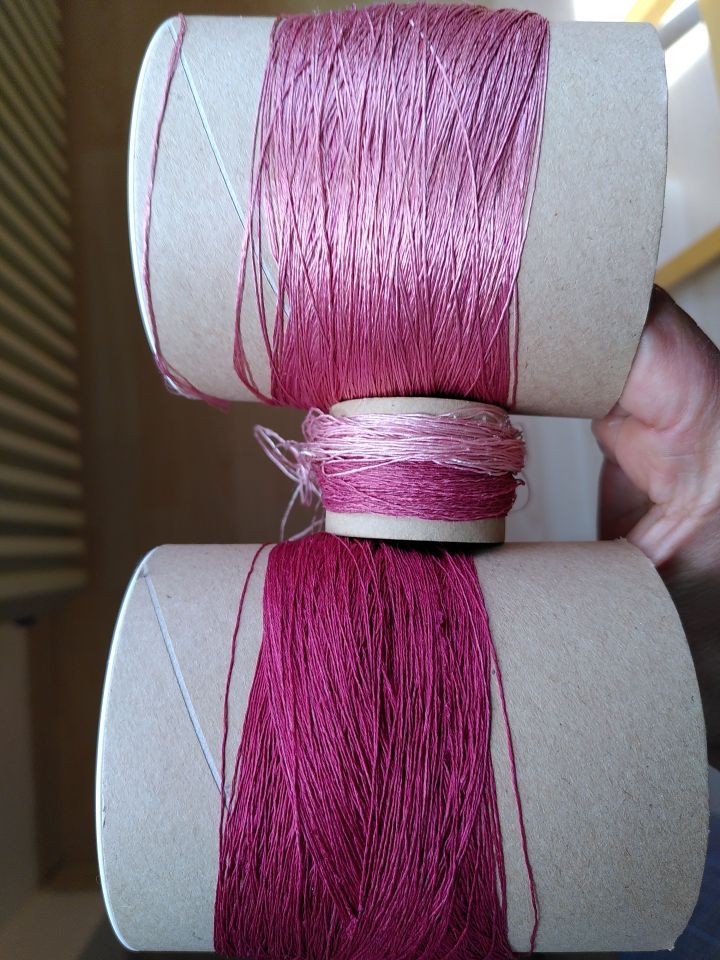A while ago I wrote about dyeing silk and different outcomes, depending on whether it had been degummed or not. My degumming try that I referenced back in that post ended up being not completely successful, as some of the gum had still stayed in.
I finally got around to doing it again, with a fresh sample, and this time I made sure to steep it to death, or something very close - it stayed in the hot soapy bath for a full hour, and I used de-ionised water to avoid any hindrance by our rather hard tap water.
And here's the result:
As you can see, there's four samples now. The one on the bottom is the silk dyed in the gum, the one on top is untwisted degummed embroidery silk dyed together with the gummy silk. On the small roll in the middle, the bottom one is the outcome of my last trial, partly degummed, and on top is the completely degummed silk.
It's become very light in colour, even lighter than the silk that was degummed before dyeing. I had expected something like that - either a bit lighter, or somewhere around the colour of the embroidery silk.
There is definitely more shine now, but it is also much more delicate; I've had several snaggy bits even though it's a twisted silk.
So my current conclusions are:
If you want to work with silk that has next to no twist at all, leaving it gummy or partly gummy might be a good idea to up the stability. The sericin also seems to take natural dyes much better, so if you want to have really deep, vivid colours... leaving it gummy or partly gummy is, again, your friend. In case you want it to be utterly shiny, though, degumming is the way to go.
Though I had the impression that the thin strands of gummy silk, with about 20 den, are also looking quite shiny. More exploration might be necessary...
